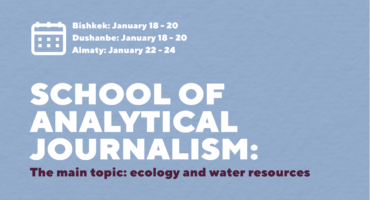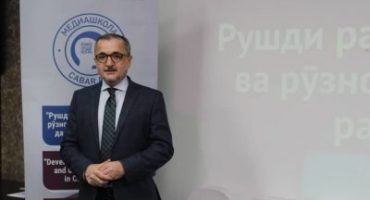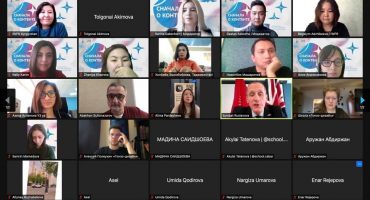On December 9 and December 14, the Institute for War and Peace Reporting in Central Asia (IWPR CA) presented the Handbook for journalism tutors “Handbook on New Media” in Bishkek and Dushanbe. The Handbook is one of the important outcomes of the long-term CABAR.asia Media School’s initiative to work with the journalism faculties.
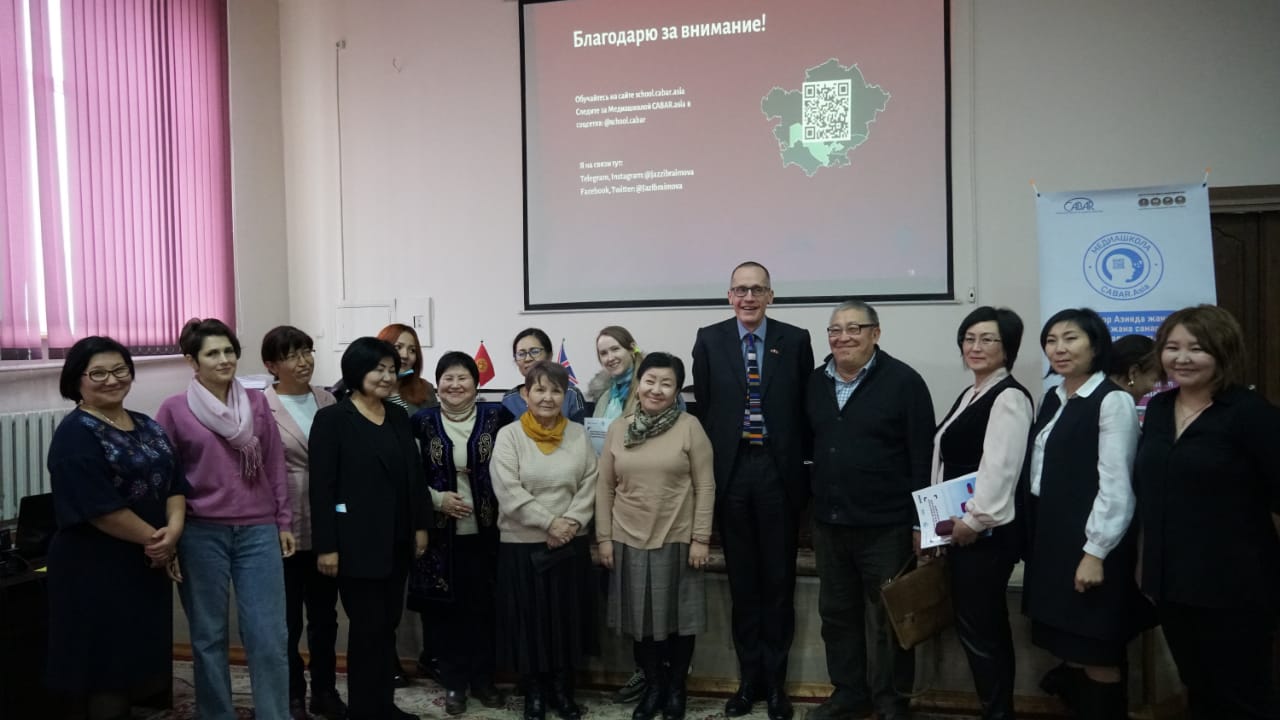
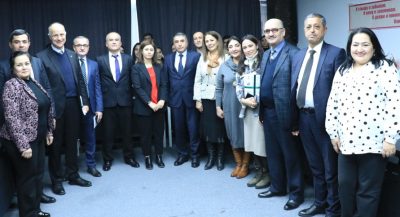
The Handbook was prepared as part of the Development of New Media and Digital Journalism in Central Asia project implemented by IWPR CA with the financial support of the UK Government.
Opening the event in Bishkek, Vice-Rector for Academic Affairs at the Kyrgyz National University Bekzhan Temirov said the university was always ready to cooperate in the implementation of projects and programs to ensure high professional education.
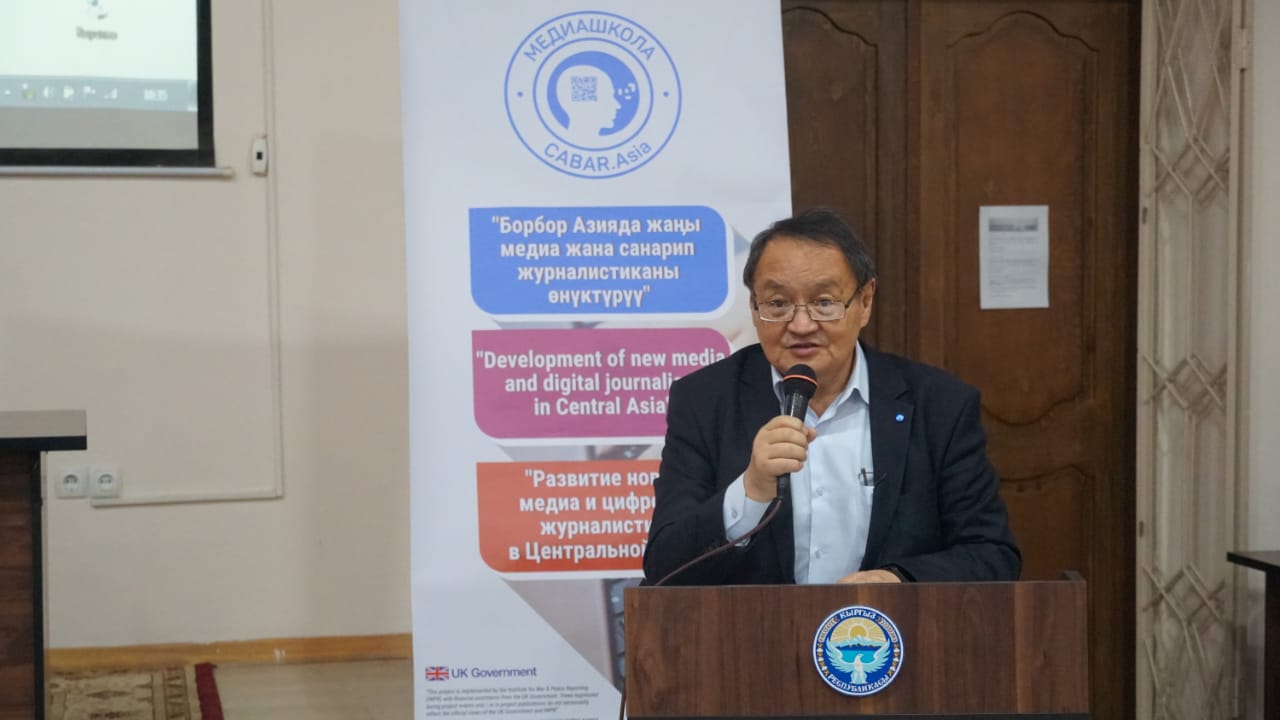 “Today, it is especially important for both students and tutors to improve their skills in the creation and distribution of new multimedia content, as well as to understand and counter disinformation and fake news professionally. All events held as part of this project help universities to train media specialists at a high professional level in accordance with current market requirements,” said the Vice-Rector of Kyrgyz National University.
“Today, it is especially important for both students and tutors to improve their skills in the creation and distribution of new multimedia content, as well as to understand and counter disinformation and fake news professionally. All events held as part of this project help universities to train media specialists at a high professional level in accordance with current market requirements,” said the Vice-Rector of Kyrgyz National University.
In his welcoming speech, Her Majesty’s Ambassador to Kyrgyzstan Charles Garrett noted that this methodological Handbook showed how one of the most exciting professions in the world – journalism – adapts to the new reality.
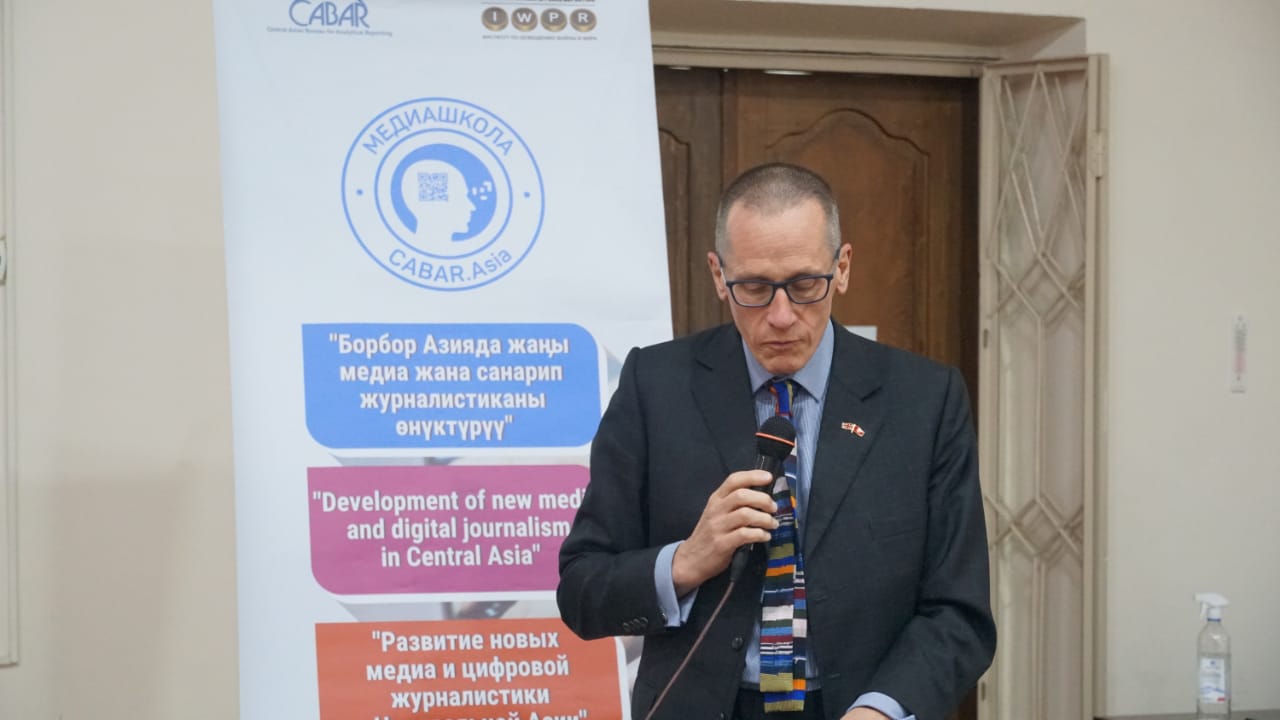 “This collection of courses is not quite a classic handbook, it is a guide and assistant in the world of multimedia and communications, which will help readers to understand what it is, whether it is worth doing it, and how they can develop further in the new digital world,” the Ambassador added.
“This collection of courses is not quite a classic handbook, it is a guide and assistant in the world of multimedia and communications, which will help readers to understand what it is, whether it is worth doing it, and how they can develop further in the new digital world,” the Ambassador added.
 IWPR Central Asia Regional Director Abakhon Sultonnazarov opened the meeting in Tajikistan. He noted that in August 2019, IWPR CA conducted a Training of Trainers (ToT) on new media for tutors from seven universities in Tajikistan. During the ToT, the tutors suggested creating a guide to new media for further use in the teaching process.
IWPR Central Asia Regional Director Abakhon Sultonnazarov opened the meeting in Tajikistan. He noted that in August 2019, IWPR CA conducted a Training of Trainers (ToT) on new media for tutors from seven universities in Tajikistan. During the ToT, the tutors suggested creating a guide to new media for further use in the teaching process.
“Thanks to your ideas and the constant support of the Ministry of Education and the UK Government, we were able to implement this idea; today, we are glad to show you the results of our joint work,” Sultonnazarov said.
The Handbook includes seven courses on the specifics of the new media, conditions and
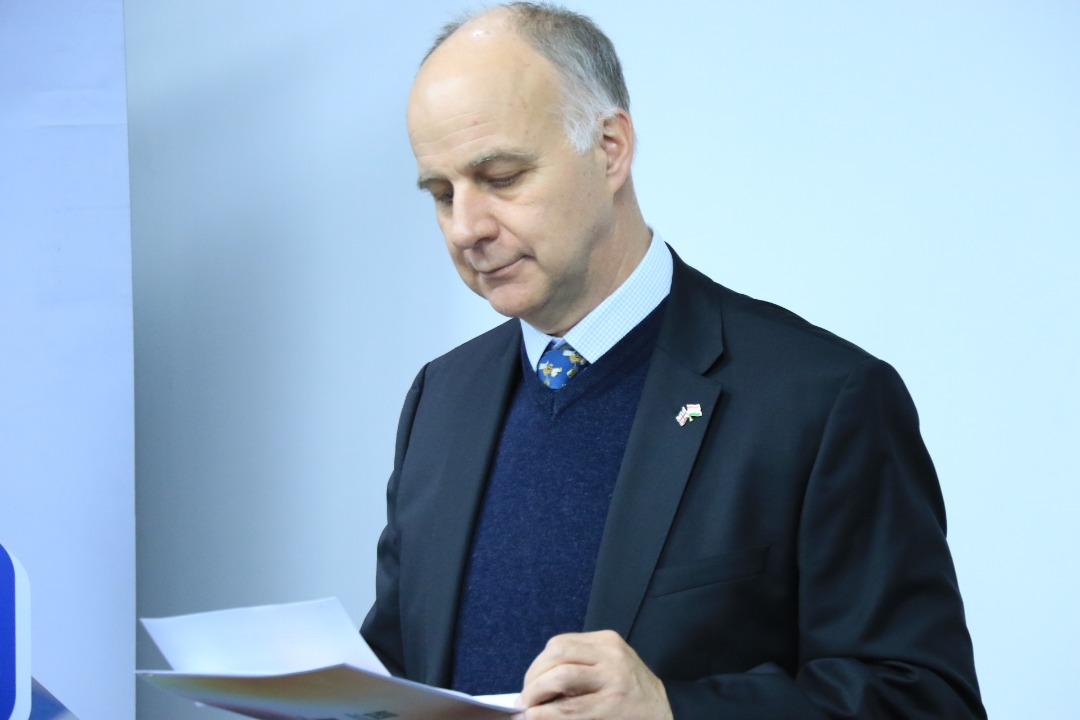 factors for creating successful digital materials, methods and principles of work of online journalists. Each course includes lessons consisting of theoretical materials for tutors and topic-specific video tutorials. All lessons provide the assignments for seminars and practical classes to consolidate the studied material.
factors for creating successful digital materials, methods and principles of work of online journalists. Each course includes lessons consisting of theoretical materials for tutors and topic-specific video tutorials. All lessons provide the assignments for seminars and practical classes to consolidate the studied material.
Her Majesty’s Ambassador to Tajikistan Tim Jones said,
“The United Kingdom actively supports media freedom and empowerment around the world, since media is not only one of the most important pillars of democracy but also the foundation for economic welfare and social development in every country.”
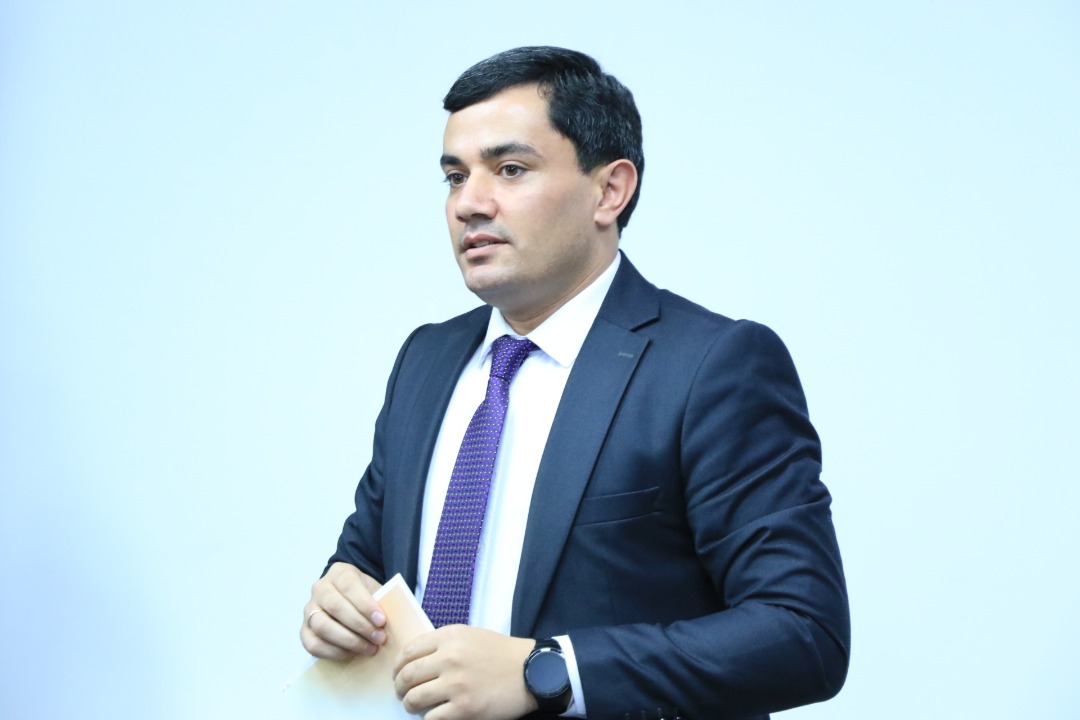 During the presentation, a representative of the Ministry of Education and Science Ehson Safarzoda thanked IWPR CA for the three-year cooperation in the implementation of the new media project.
During the presentation, a representative of the Ministry of Education and Science Ehson Safarzoda thanked IWPR CA for the three-year cooperation in the implementation of the new media project.
“We have achieved all the goals set at the beginning of the project but the most important achievement of the project and its legacy is, of course, this tutorial,”Ehson Safarzoda summed up.
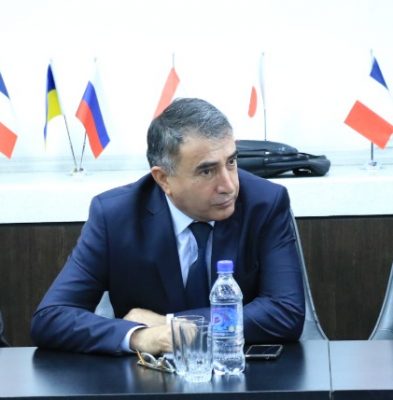
In an interview, a tutor at the Journalism Faculty of the Tajik National University Sangin Gulov said that the Handbook is a guide for tutors, journalists, and those interested in journalism; its authors are professionals who have achieved success in this area.
“This guide makes a significant contribution to the development of Tajik journalism,” he concluded.
At the end of the presentation, the Handbooks were donated to the universities’ libraries. A digital version of the Handbook is available at the CABAR.asia Media School website.
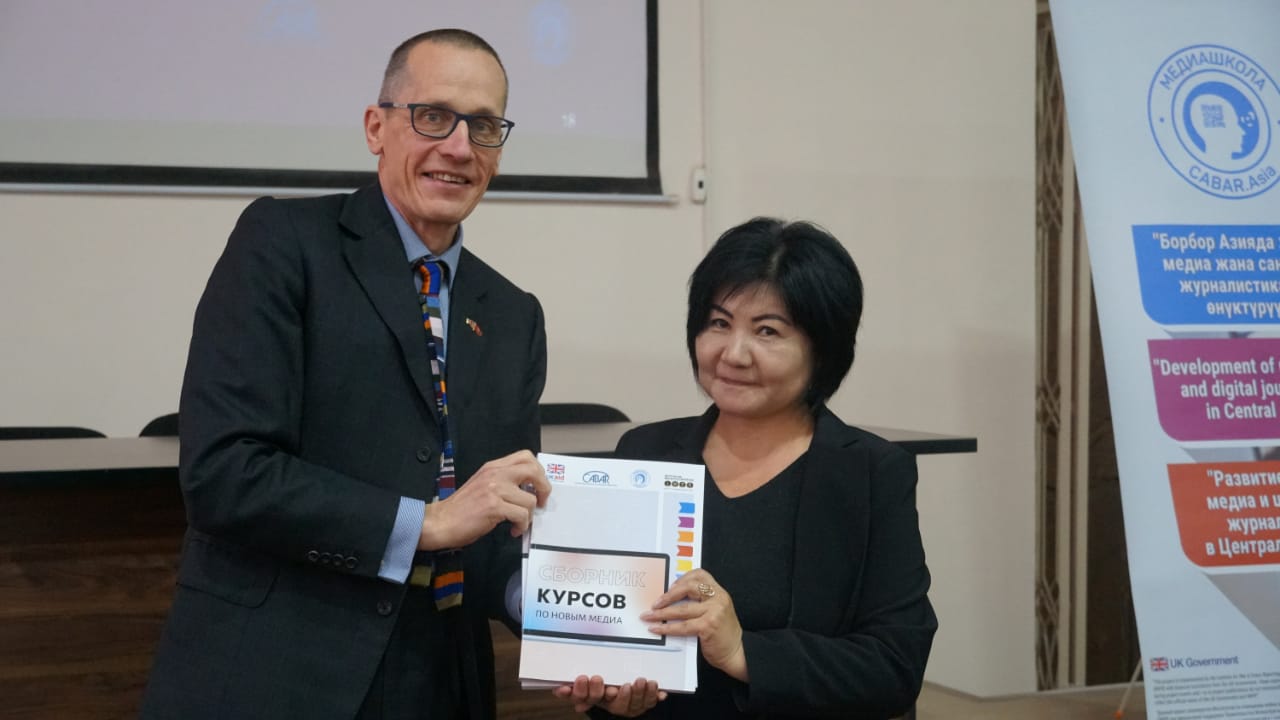
This article was prepared as part of the mentoring program of the Development of New Media and Digital Journalism in Central Asia project implemented by the Institute for War and Peace Reporting (IWPR) with the financial support of the UK Government. The content of the article does not reflect the official position of the Government of the United Kingdom and IWPR.
If you have found a spelling error, please, notify us by selecting that text and pressing Ctrl+Enter.


